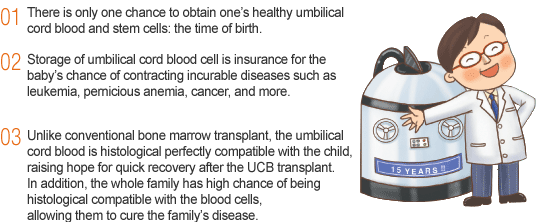 |
|
 |
 |
|
 |
 |
Hematologic malignancy
Acute lymphocytic leukemia, Chronic lymphocytic leukemia, Acute myeloid leukemia,
Chronic hydrophobic leukemia, Multiple myeloma, Myelodisplastic syndrome, solid
cancer (breast cancer, non-Hodgkin lymphoma, Ewing Sarcoma, Lymphoma, Seminoma,
Ovarian cancer, Neuroblastoma, Testicular cancer), et cetra
|
|
Blood disorder and disorders related to hemoglobin
Anemia aplastic, Fanconi anemia, Amegakaryocytic thrombocytopenia, Sickle-cell
anemia, Mediterranean anemia Blackfan-Diamond anemia, Congenital hypocytosis,
Evan syndrome, Kostmann syndrome, et cetera
|
|
Immunodeficiency
Congenital immunodeficiency, ADA congenital immunodeficiency, ADA enzyme
deficiency, sex-linked granulomatous disease, severe combined immunodeficiency,
Wiskott-Aldrich syndrome, X-linked lymphoproliferative syndrome(XLP), et cetera
|
|
Congential metabolic disorder
GaucherЎЇs disease, Adrenoleukodystrophy (ALD), Amyloidiosis, Dyskeratosis congenita,
Bare lymphocyte syndrome, Hunter syndrome, Lesch-Nyhan syndrome, Familia
Erythrophagocytic Lymphohistiocytosis, Gunter disease, ,Hurler symdrome, Krabbe
disease, Langerhans cell histiocytosis, leukocyte adhesion deficiency, osteopetrosis,
et cetera
|
|
Autoimmune disease
Multiple Sclerosis, Systematic lupus erythematosus
|
 |
|
|
 |
 |
Osteperosis, Degenerative arthritis, AlzheimerЎЇs disease, Diabetes,
ParkinsonЎЇs disease, Myocardial infarction, Spinal damage, liver disease,
stroke, et cetera
Stem cells in the umbilical cord blood are valuable resources that can be selectively
chosen and differentiated into specific body parts, curing degenerative diseases and
tissue damage that causes incurable diseases.
Also, the culture and amplification of these cells are being researched, which is showing hope for the cure of the diseases that could not have been cured up to present time.
|
 |
|
 |
 |
|
Hematopoietic cell transplant is divided into two parts.
First, abnormal bone marrow (due to tumor, structural
deformity, genetic disorder, et cetera) is destroyed by
high-dosage chemotherapy or radiation therapy.
Second, the normal hematopoietic cells are transplanted
to restore the functions of normal bone marrow and to
restructure the immune system.
|
| |
 |
Auto transplantation of bone marrow/peripheral blood/umbilical cord blood
(from oneЎЇs own body). Allotransplantation of bone marrow/peripheral blood/
umbilical cord blood (from otherЎЇs body) |
|
 |
|
Sharing of hematopoietic cells is possible only if the HLA (human leukocyte antigen)
type matches.
HLA is located in chromosome number 6, and its heredity follows MendelЎЇs rule of
heredity. Therefore, the probability of matching HLA between siblings is about 25%.
|
|
 |
|
In France in 1988, the first cord blood hematopoietic cell transplant was executed on
a patient with Fanconi anemia.
After that, researches on hematopoietic cells in umbilical cord blood revealed that
they perform better than bone marrow. Subsequent efforts went into the cold storage
of the umbilical cord blood, and starting around 1996, treatment of leukemia, genetic
disorder, and pernicious anemia using freeze-dried umbilical cord bloodЎЇs hematopoietic
cells became active. At the time of writing, over 5,000 hematopoietic cell transplants
were completed
|
|
 |
 |
|
Hematopoietic cell transplant is a medical treatment that
administers cells extracted from peripheral blood mobilized
by umbilical cord blood, bone marrow, or growth factor.
The treatment cures incurable diseases caused by
hematopoietic system and subtle environment factors.
According to reports from researchers in and out of the country, umbilical cord blood contains numerous hematopoietic cell and stem cells. In addition, it is always ready for used once freeze-dried. Therefore, it can be instantly transplanted to the patient, and has considerably lower risk of viral infection.
|
Due to these advantages, umbilical cord blood is a complementary/replacement source
of hematopoietic and stems cells, and is used to cure incurable diseases such as
hematological malignancy.
|
|
 |
| Sampling |
|
Sampled from the artery of the
umbilical cord after the extraction
of the placenta.
Contains no risk or pain
|
|
Painful due to numerous
extraction procedures
|
|
|
Histological compatibility
Compatibility rate of HLA
|
|
Only 3 of 6 HLA needs to match for transplant. |
|
All 6 HLA needs to match for transplant. |
|
|
|
|

